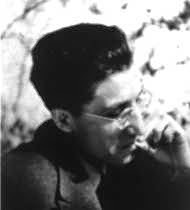
In his recent Times Sunday Review piece “Love People, Not Pleasure” (NYT, 7/18/14), Arthur C. Brooks quotes the Buddhist Dhammapada to the effect that:
“The craving of one given to heedless living grows like a creeper. Like the monkey seeking fruits in the forest, he leaps from life to life…Whoever is overcome by this wretched and sticky craving, his sorrows grow like grass after the rains.”
In the piece Brooks deals with the need to seek external pleasures (fame, money, sex) “to fill an inner emptiness. They may bring a brief satisfaction but it never lasts and it is never enough. And so we crave more.” The Brooks article segues neatly into another piece in the same issue of the Sunday Review, Joshua Wolf Shenk’s “The End of ‘Genius'” (NYT, 7/19/14) Shenk writes,
“The lone genius is a myth that has outlived its usefulness. Fortunately, a more truthful model is emerging: the creative network, as with the crowd-sourced Wikipedia or the writer’s room at ‘The Daily Show’ or–the real heart of creativity–the intimate exchange of the creative pair, such as John Lennon and Paul McCartney and myriad other examples with which we’ve yet to fully reckon.”
Getting back to the Brooks piece can we conclude in the age of networking, of the hive mentality, fame will no longer be one of the illusory pleasures available to creative and others who seek to accolades as an analgesic to emptiness? Abstract expressionism thrived on this once highly touted notion of fame. Rothko, Pollock, De Kooning were larger than life figures who spun their own mythologies and whose eccentricities were tolerated for the sake of talent. They were given the license to venture where angels feared to tread. The path of destruction they left behind was excused as the price paid by genius. Virginia Woolf, Anne Sexton, Sylvia Plath, Cesare Pavese and John Berryman paid an even more severe price, if the cultivation of an aloof and self-consciously alien artistic persona is at all connected to their suicides. Self-destruction and the destruction of others didn’t seem too high a price to pay for the sake of Art. But was it or is it ever worth the cost? The moral philosopher Ronald Dworkin dealt with a similar problem in his final book Justice for Hedgehogs. Can the pursuit of good really be justified when it results in extreme self-sacrifice (that ultimately entails the destruction of the self)? How great is greatness? How exalted are the productions of so called great men? Beauty may be truth and it may be mind blowing, but it’s like planned obsolescence. It has a certain expendability. Great artistic endeavors may be immortal but they’re also human and by definition corruptible and imperfect. Without the qualities that mitigate against ultimate greatness, we would not be able to see ourselves in them. Art would be food for gods, rather than men. For good or bad, in the 21st century artists, writers, and poets have received a demotion and are looked at as craftsmen who satisfy our need for works that are beautiful and edifying. Nowhere in the Poetics does Aristotle outline society’s need for superior individuals who create oversized reputations bought at the price of their own well-being and those closest to them. Flaubert said it best, “be regular and orderly in your life like a bourgeois, so that you may be violent and original in your work.”
This was originally post to The Screaming Pope, Francis Levy’s blog of rants and reactions to contemporary politics, art and culture
photo of Cesare Pavese
SOURCE: Arts – The Huffington Post – Read entire story here.